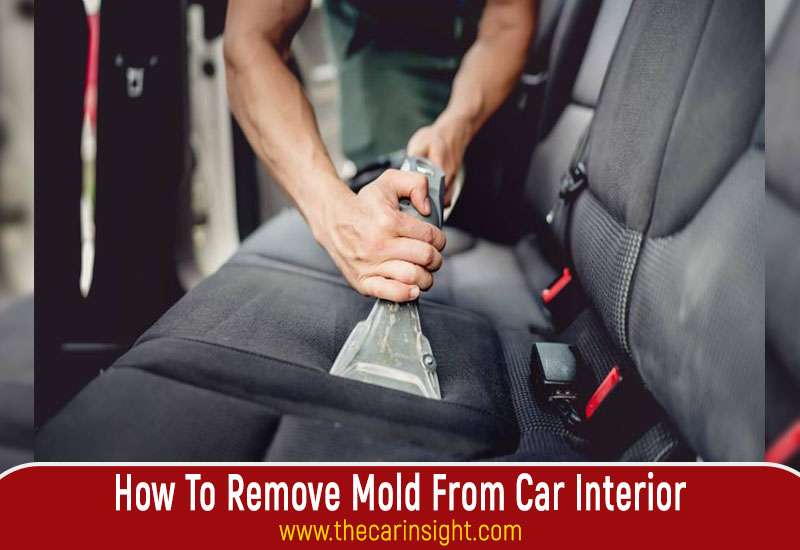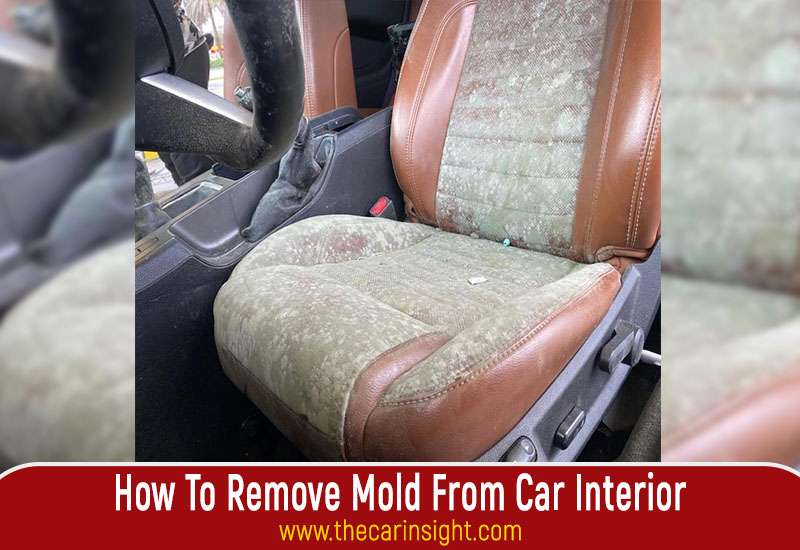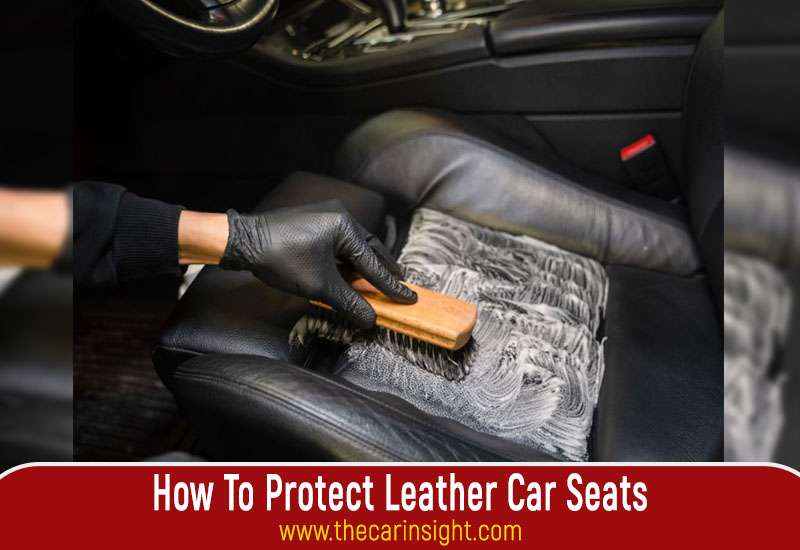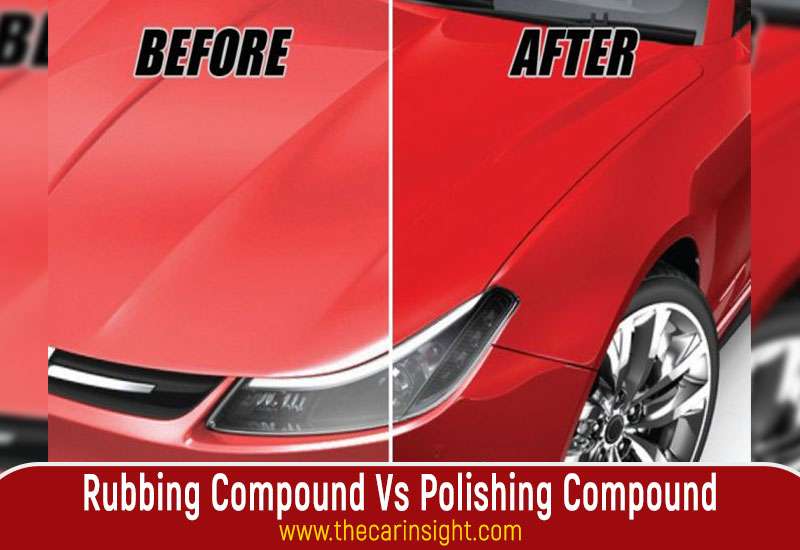How To Remove Mold From Car Interior: To remove mold from a car interior, start by vacuuming the affected areas to remove loose spores, then use a mixture of water and vinegar or hydrogen peroxide to clean the mold.
Identifying Mold
Mold is a common problem in car interiors, especially in humid climates or if there has been water damage. If left untreated, mold can not only cause a foul odor but can also pose health risks to you and your passengers. Therefore, it is crucial to identify and remove mold as soon as possible. In this section, we will discuss how to recognize signs of mold and how to search for hidden mold spots.
but can also pose health risks to you and your passengers. Therefore, it is crucial to identify and remove mold as soon as possible. In this section, we will discuss how to recognize signs of mold and how to search for hidden mold spots.
Recognizing Signs Of Mold
If you suspect that mold may be present in your car, keep an eye out for these telltale signs:
- A strong musty odor: Mold has a distinct smell often described as earthy or damp.
- Visible discoloration: Look for dark spots or patches on your car’s upholstery, carpets, or any other surfaces.
- Peeling or bubbling paint or wallpaper: If you notice this in your car’s interior, it could indicate mold growth behind the affected area.
- Water stains or discoloration: Pay attention to areas exposed to water, such as near windows or sunroofs.
If you notice any of these signs, it is essential to take action to remove the mold promptly.
Searching For Hidden Mold Spots
Mold can sometimes hide in hard-to-reach places in your car. To ensure a thorough mold removal, here are some areas you should inspect:
| Interior surfaces | Common areas for hidden mold |
|---|---|
| Carpeting | Underneath the carpet, especially near the seats and in the trunk area |
| Seats | Underneath the seat cushions or in the crevices |
| Headliner | Near the edges or seams of the headliner |
| Air conditioning vents | Mold can thrive inside the vents and spread throughout the car when the air conditioning system is turned on |
To search for hidden mold spots, use a flashlight and carefully inspect these areas. If you spot any mold growth, make sure to take appropriate measures to remove it completely.
Preparation
To remove mold from a car’s interior, start by thoroughly cleaning and vacuuming the affected areas. Next, apply a commercial mold remover or a mixture of water and vinegar to the surface. Scrub the mold with a brush and wipe it clean with a cloth.
Finally, let the interior dry completely before using the car again.

Gathering Necessary Supplies
Before starting the mold removal process, ensure you have the following supplies:
- Protective gear like gloves and a mask
- Vinegar or a commercial mold remover
- Water and a spray bottle
- Cloth or sponge
- Vacuum cleaner with a HEPA filter
- Brush or scrubbing tool
Protecting Yourself
It is crucial to protect yourself with the right gear during mold removal:
- Wear gloves to shield your hands
- Use a mask to prevent inhaling mold spores
- Wear long sleeves and pants
Cleaning Products
Cleaning products play a crucial role in effectively removing mold from car interiors. With the right cleaning agents, you can get rid of this stubborn fungus and ensure a clean and healthy interior for your vehicle. In this section, we will discuss the importance of choosing the right cleaning agents and explore some natural remedies for mold removal.
Choosing The Right Cleaning Agents
When it comes to removing mold from your car interior, it is essential to select the appropriate cleaning agents. Not all cleaners are effective against mold, so it’s important to choose ones that specifically target this issue. Opt for cleaners that contain powerful anti-fungal properties to ensure the complete eradication of mold.
If you prefer commercially available cleaning products, look for those specifically designed for mold removal. These products are formulated to penetrate deep into car upholstery, carpets, and other affected surfaces to eliminate mold spores and prevent their regrowth. Additionally, choose cleaners that are safe for use on various materials, including fabric, leather, vinyl, and plastic, to avoid any damage to your car’s interior.
TIP: Test Before Use
Before applying any cleaning agent to your car’s interior, it is always recommended to test it on a small, inconspicuous area. This helps you ensure that the cleaner doesn’t cause discoloration, etching, or any other damage to the surface.
Natural Remedies For Mold Removal
If you prefer a more natural approach to mold removal, several household items can effectively combat mold growth:
1. Vinegar: Vinegar is a versatile and natural cleaning agent, thanks to its high acidity. Prepare a mixture of equal parts vinegar and water, and spray it onto the mold-infested areas. Let it sit for a few minutes and then scrub the surface with a brush or sponge. The acetic acid in vinegar not only kills mold spores but also helps to prevent future growth.
2. Baking Soda: Baking soda is another effective natural remedy for mold removal. Make a paste by combining baking soda with a small amount of water. Apply the paste to the affected areas and scrub gently. Let it sit for a few minutes, and then rinse with water. Baking soda’s properties help neutralize the musty odor caused by mold while also inhibiting its growth.
3. Tea Tree Oil: Known for its antifungal properties, tea tree oil can be a potent weapon against mold. Create a mixture of tea tree oil and water (1 teaspoon of oil per cup of water) and spray it onto the mold-infested surfaces. Leave it for a few hours, allowing the oil to penetrate and eliminate the mold. Then, wipe the surface clean with a damp cloth.
CAUTION: Ventilation is Key
Make sure to open windows or use fans while using natural remedies for mold removal. Proper ventilation helps prevent the buildup of fumes and promotes faster drying of treated surfaces.
By choosing the right cleaning agents and employing natural remedies, you can effectively remove mold from your car interior. Regular cleaning and prompt action can help prevent mold growth and maintain a fresh and hygienic environment inside your vehicle.
Removing Mold From Upholstery
Mold can quickly spread on car upholstery if not addressed promptly. To effectively remove mold from upholstery, follow these steps:
Vacuuming And Brushing
- Begin by vacuuming the affected area thoroughly to remove any loose mold spores and debris.
- Use a soft-bristled brush to gently agitate the mold and loosen it from the fabric.
- Dispose of the vacuum bag immediately to prevent mold spores from spreading.
Using Upholstery Cleaner
- Choose a mold-specific upholstery cleaner to effectively eliminate mold stains and odors.
- Test the cleaner on a small, inconspicuous area first to ensure it does not damage the fabric.
- Apply the cleaner to the affected upholstery according to the manufacturer’s instructions.
Treatment For Mold On Hard Surfaces
Mold on hard surfaces in your car interior can not only be unsightly but also pose a health risk for you and your passengers. Proper treatment for mold on hard surfaces is essential to ensure a clean and safe environment inside your vehicle.
Scrubbing And Wiping
Start by scraping off any loose mold with a soft brush or cloth. Then, create a cleaning solution using equal parts of white vinegar and water. Dip a clean cloth into the solution and thoroughly scrub the affected hard surfaces in your car. Wipe the surfaces with a dry cloth to remove any moisture and residual mold.
Disinfecting Hard Surfaces
To effectively disinfect hard surfaces, use a solution of 1 cup of hydrogen peroxide mixed with 2 cups of water. Apply the solution to the affected areas and let it sit for 10 minutes. Then, wipe the surfaces clean with a damp cloth. Ensure thorough ventilation of the car interior to aid in drying and prevent mold regrowth.
Dealing With Persistent Mold
Mold can be stubborn, especially in car interiors where moisture and warmth create a perfect breeding ground. Dealing with persistent mold in your car can be frustrating, but with the right approach, you can effectively tackle the issue. Here’s how to manage persistent mold and prevent it from coming back.
When To Seek Professional Help
If you’ve tried DIY methods with no success or the mold infestation is extensive, it’s time to seek professional help. A certified mold remediation specialist can thoroughly assess the situation and employ specialized techniques to eliminate the mold from your car interior.
Preventing Future Mold Growth
To prevent future mold growth, it’s crucial to address the underlying causes. Keep your car interior dry by using moisture-absorbing products and regularly airing out the vehicle. Additionally, consider using mold-resistant products for cleaning and maintenance, such as mold-resistant car seat covers and interior cleaners specifically designed to inhibit mold growth.
Drying And Ventilating
To remove mold from the car interior, drying and ventilating the affected area is crucial. Use a combination of dry towels and fans to dry out the interior thoroughly, and ensure proper ventilation by leaving windows open. This will prevent mold from recurring and maintain a fresh, mold-free car interior.
Speeding Up Drying Process
The first step in removing mold from your car interior is to quickly and effectively dry the affected areas. This is crucial because mold thrives in damp environments, and by eliminating the moisture, you can halt its growth. Here are some tips to expedite the drying process:
- Expose the affected area to direct sunlight: Park your car in a sunny spot and roll down the windows, allowing the sunlight to work its magic.
- Use a portable fan: Position a fan to blow directly on the damp spots, helping to maximize air circulation and speed up the drying process.
- Utilize a dehumidifier: If you have access to a dehumidifier, place it in the car for a few hours to effectively remove excess moisture from the air.
Ensuring Proper Ventilation
In addition to drying the affected areas, it is crucial to ensure proper ventilation inside your car to prevent the recurrence of mold. Here are some effective ways to achieve this:
- Keep windows open: When you’re not using your car, leaving the windows cracked open can help maintain airflow and avoid a buildup of moisture.
- Run the air conditioner: Turning on your car’s air conditioning system can help circulate air and reduce humidity levels.
- Clean air vents and filters: Regularly clean and maintain your car’s air vents and filters to prevent mold from growing in these areas.
By following these steps and taking proactive measures, you can effectively remove mold from your car interior and prevent it from returning. Remember, quick action is key, as mold can spread rapidly and may pose health risks if left untreated.
Regular Maintenance
Maintain your car interior regularly to prevent mold growth. Use a mixture of white vinegar and water to eliminate mold effectively, keeping your car clean and odor-free. Regular attention can help preserve the condition of your vehicle and ensure a healthy environment for passengers.
Regular maintenance is crucial to prevent mold growth in your car interior.
Tips for Preventing Mold
1. Keep interior surfaces clean: Regularly clean surfaces to prevent mold buildup.
2. Use a dehumidifier: Maintain optimal humidity levels to inhibit mold growth.
3. Avoid food and drink spills: Clean up spills promptly to prevent mold feeding.
Scheduled Cleaning Routine
1. Establish a regular cleaning schedule: Set a weekly cleaning routine to prevent mold.
2. Vacuum and disinfect: Use a vacuum and disinfectant to remove any mold spores.
3. Inspect and treat problem areas: Check for mold-prone areas and treat them accordingly.
4. Ventilate the car: Ensure proper air circulation to reduce moisture levels.
5. Use mold-resistant products: Utilize mold-resistant materials for car mats and upholstery. Regular maintenance and scheduled cleaning are key to keeping mold at bay in your car interior.
Frequently Asked Questions For How To Remove Mold From Car Interior
How Do You Get Rid Of Mold In Car Interior?
To get rid of mold in your car interior, follow these steps: 1. Use a vacuum cleaner or brush to remove loose mold spores. 2. Mix equal parts of water and white vinegar, then apply the solution to the affected areas.
3. Scrub the mold with a soft brush or cloth. 4. Rinse with clean water and dry thoroughly. 5. Use a mold inhibitor spray to prevent future growth.
Can A Moldy Car Be Saved?
Yes, a moldy car can be saved by thoroughly cleaning and disinfecting the affected areas. Use mold-killing products and professional services if needed. Regular maintenance and keeping the car dry can prevent future growth.
Can Mold Be Removed From A Car?
Yes, mold can be removed from a car using specialized cleaning products and techniques. It’s important to address mold promptly to prevent it from spreading and causing health issues. Regular cleaning and maintenance can help prevent mold growth in the future.
Is Mold Inside A Car Bad?
Yes, mold inside a car is bad. It can cause health problems and unpleasant odors. Regular cleaning and ventilation can help prevent mold growth.
How Does Mold Form In Car Interiors?
Mold thrives in moisture-rich environments, making car interiors with water damage susceptible.
Is Mold In Car Interiors Harmful To Health?
Yes, mold in car interiors can trigger allergies and respiratory issues, posing health risks.
Can I Remove Mold From Car Seats Myself?
With proper methods and products, DIY mold removal from car seats is possible.
Conclusion
To effectively remove mold from your car interior, it’s crucial to follow the right steps. By thoroughly cleaning and disinfecting the affected areas, you can ensure a safe and healthy environment inside your vehicle. Regular maintenance and ventilation will also help prevent future mold growth.
Don’t let mold compromise the quality of your driving experience – take action today to maintain a fresh and clean car interior.



